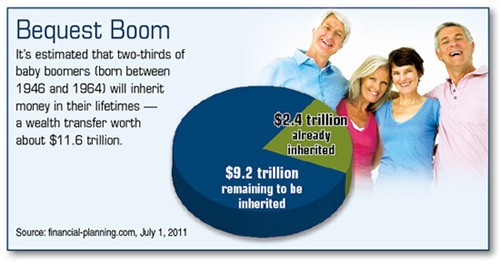Here's a list of new taxes
that took effect as of Jan. 1:
 |
| Income tax (Photo credit: Alan Cleaver) |
Payroll Taxes: Returning to Old
Levels
For the past
two years, just about everyone who has a job got a tax break of 2 percentage
points on the Social Security taxes withheld from their paychecks. But on Jan.
1, the rate of tax withheld from employee paychecks rose from 4.2% to 6.2%,
representing about a $1,000 tax increase for typical families earning $50,000.
Already, anyone who's received a paycheck in 2013 has likely seen the impact of
this tax, with those who get paid twice a month having about $40 extra taken
out under the FICA on their paychecks.
Few analysts expected the
fiscal cliff negotiations to extend this tax break further. But given that it
hits at just about everyone, it could have the biggest impact of any of the new
taxes in 2013.
Medicare Surcharge
High-income
earners will see a brand-new tax this year. Single filers earning more than
$200,000 and joint filers with income over $250,000 could be subject to two new
taxes.
With one tax, if your earned
income goes above the threshold, then you'll owe an extra 0.9% of your earnings
in Medicare withholding. In some cases, this additional money may be taken
directly out of your paycheck, although for joint filers, your employer may not
be able to do so accurately because it doesn't know what your spouse earns in
order to get the calculation correct.
The second tax applies to
investment income, including interest, dividends, and capital gains. For this
income, you'll owe an extra tax of 3.8% for any amount that exceeds the
threshold. The idea behind this part of the new tax is to treat investment
income for high-income earners the same way as earned income, making both types
of income subject to the same higher Medicare tax rate.
New Tax Brackets and Rates for
High-Income Earners
The biggest
news from the fiscal cliff compromise was the return of the 39.6% tax rate for
singles earning more than $400,000 and joint filers with income above $450,000.
This rate is a carryover from the old rate structure that existed before the
tax cuts of the early 2000s and represents a 4.6 percentage point rise from the
old 35% rate.
In addition, taxpayers whose
earnings are above these thresholds will see their taxes on dividends and
capital gain income rise from 15% to 20%. Given that dividend rates could have
risen as high as the 39.6% ordinary income tax rate, investors were fairly
pleased with the eventual outcome.
Disappearing Deductions and
Other Hidden Taxes
In addition to the explicit increases in taxes, some old provisions are back
that will have the same tax-increasing impact. In particular, two separate
rules that phase out certain deductions for high-income taxpayers came back
this year after having been absent from tax law since 2009.
The phase-outs target two
areas: personal exemptions and itemized deductions. One rule, known as the PEP,
reduces the value of your personal exemptions by 2% for every $2,500 in
additional income you earn over thresholds of $250,000 for singles and $300,000
for joint filers. The other rule, called the Pease phaseout, cuts the amount
you can claim in itemized deductions by 3% of the amount of additional income
you earn over those same thresholds, subject to a maximum reduction of 80% of your
itemized deductions.
Those calculations are a bit
complicated, but the net result is that you can end up paying thousands of
extra dollars in taxes by losing the value of those deductions.
Finally, the estate tax rate
rose from 35% to 40% this year. With the $5 million exemption made permanent,
however, the impact of the tax will be limited to far fewer families than would
have paid tax without the fiscal cliff compromise.
Start Planning
These new taxes for 2013 won't make anyone happy, but by knowing about them
early on, you can start planning for them right away. Doing so may not let you
reduce your tax bill too much, but it'll at least get you prepared for the hit
to your paycheck and your tax refund next year.


 IRA owners (as well as people who inherit a traditional IRA) who fail to take an RMD could be hit with a 50 percent tax penalty on the amount that should have been withdrawn. IRA beneficiaries are subject to special distribution rules. Spouses typically have more choices than nonspouses.
IRA owners (as well as people who inherit a traditional IRA) who fail to take an RMD could be hit with a 50 percent tax penalty on the amount that should have been withdrawn. IRA beneficiaries are subject to special distribution rules. Spouses typically have more choices than nonspouses.
 It’s not surprising that some people have a strong desire to steer their money toward entities that endeavor to make a difference in the world.
It’s not surprising that some people have a strong desire to steer their money toward entities that endeavor to make a difference in the world. Screeninginvolves selecting or avoiding investments in companies based on whether they help protect or cause harm to the environment or society. Some common ESG factors include, but are not limited to, pollution control, natural resource conservation, energy efficiency, employee relations, respect for human rights, health and safety, regulatory compliance, and public disclosure.
Screeninginvolves selecting or avoiding investments in companies based on whether they help protect or cause harm to the environment or society. Some common ESG factors include, but are not limited to, pollution control, natural resource conservation, energy efficiency, employee relations, respect for human rights, health and safety, regulatory compliance, and public disclosure.










